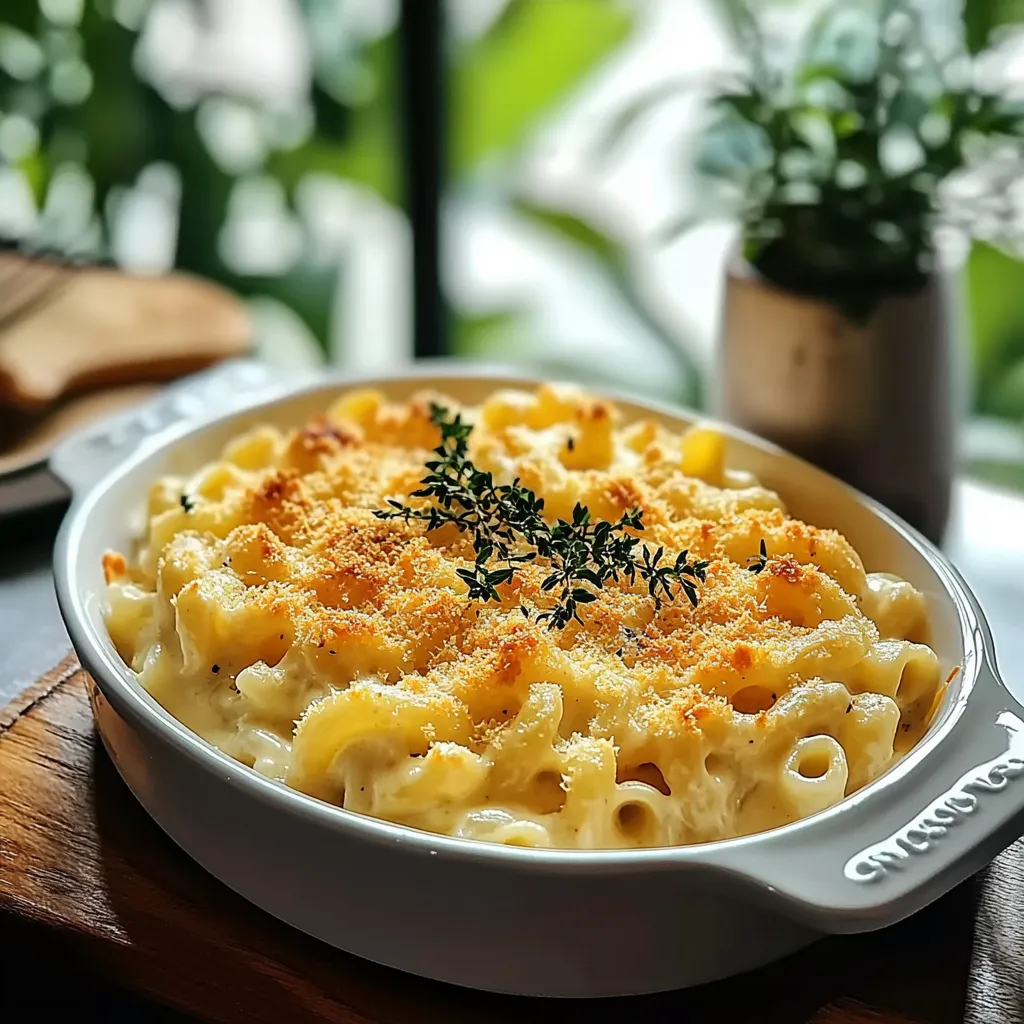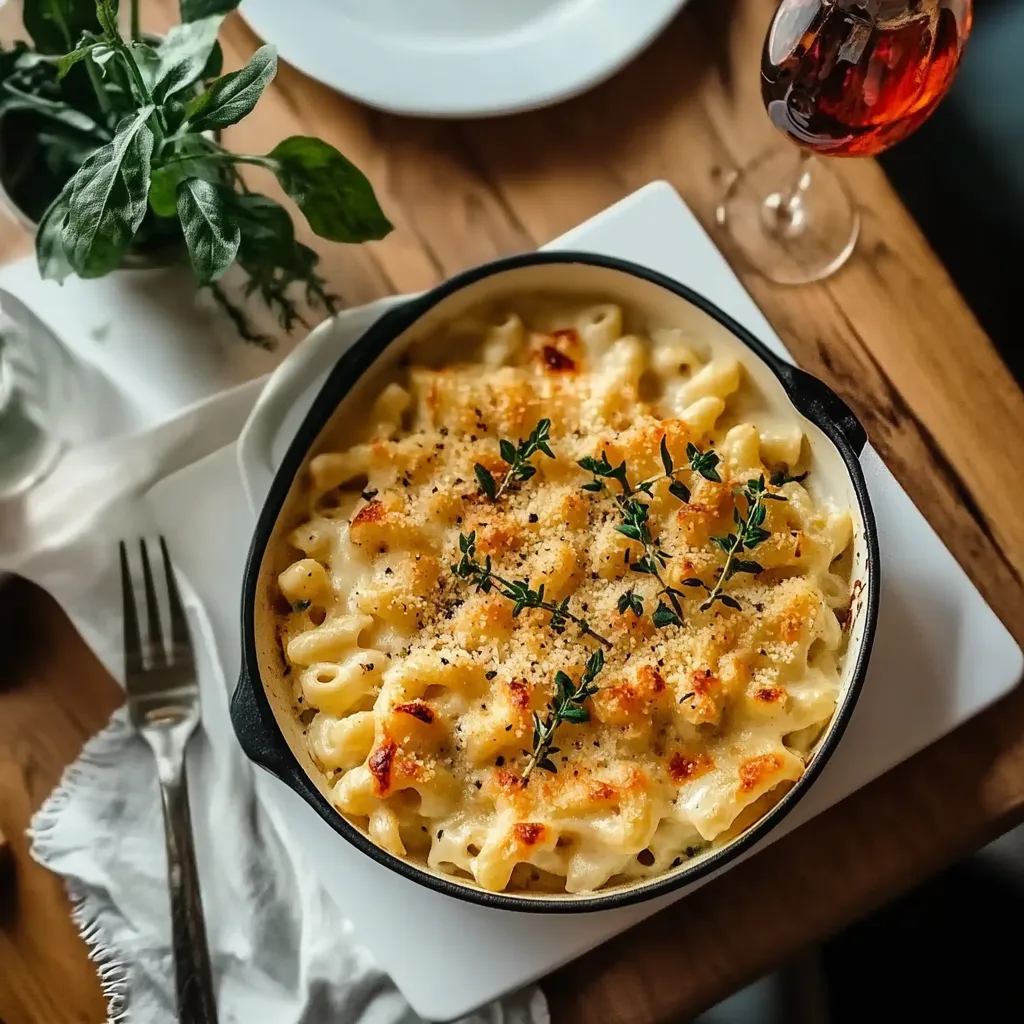Mac and cheese is a beloved comfort food that’s enjoyed by many, but it’s often associated with high calories and fat. However, with a few simple ingredient swaps, you can enjoy a Low Calorie High Protein Mac and Cheese that’s just as creamy, cheesy, and delicious as the original! Whether you’re looking for a healthier version of this classic dish or simply want to add more protein to your diet, this recipe is perfect for meal prep, weeknight dinners, or a comforting yet nutritious lunch.
In this Low Calorie High Protein Mac and Cheese recipe, the secret lies in the ingredients: cottage cheese, protein powder, and low-fat cheese. These ingredients not only enhance the flavor and texture but also provide a hefty dose of protein without compromising on taste.
Why This Low Calorie High Protein Mac and Cheese is a Game-Changer
Traditional mac and cheese can be heavy in both calories and fat, especially when made with cream and butter. However, this healthy version is crafted to keep the rich and creamy texture while cutting down on the unhealthy elements. Here’s why you’ll love this recipe:
-
High Protein Content: Each serving of this dish contains over 30 grams of protein. The inclusion of cottage cheese and optional protein powder boosts the protein content, making this a filling and satisfying meal that helps with muscle repair and growth.
-
Lower in Calories: By using non-fat cottage cheese and reducing the amount of fatty cheese, this mac and cheese provides all the creamy comfort you want without the added calories.
-
Tastes Just Like the Real Thing: The key to making this Low Calorie High Protein Mac and Cheese just as indulgent as the classic version lies in the texture and flavor. With a blend of cheeses and the right balance of spices, you won’t even miss the heavy cream or butter.
-
Perfect for Meal Prep: This dish is easy to make in bulk, stores well, and can be enjoyed throughout the week. Whether you make it ahead for lunch or freeze it for later, it’s a convenient and nutritious option for busy days.

Ingredients for Low Calorie High Protein Mac and Cheese
To make this healthier mac and cheese, you’ll need a handful of key ingredients that provide both flavor and a nutritional boost. Here’s what you’ll need:
Essential Ingredients:
-
Pasta: Choose your preferred type of pasta. Elbow macaroni is the classic choice, but penne, rigatoni, or even spaghetti work well. For a higher protein boost, consider using protein pasta, which adds 17 grams of protein per serving.
-
Non-Fat Milk: Opt for non-fat milk to keep the calorie count low. You can substitute with almond milk or soy milk for a dairy-free version, but avoid oat milk, as it has a naturally sweet flavor that may alter the taste.
-
Cottage Cheese: This is the secret ingredient! Cottage cheese adds a creamy texture and significant protein boost. Go for non-fat cottage cheese to keep it lighter, or use low-fat for a richer flavor.
-
Protein Powder: While optional, unflavored protein powder can be added to increase the protein content without changing the flavor or texture. It’s a great option for those looking to add an extra protein punch.
-
Cheddar Cheese: Use low-fat shredded cheddar cheese for that classic mac and cheese taste. If you prefer a stronger flavor, you can use a sharp cheddar.
-
Cornstarch: A small amount of cornstarch helps thicken the sauce, ensuring that it sticks perfectly to every piece of pasta.
-
Salt and Pepper: These are basic seasonings that bring out the flavors in the dish. Add them to taste.
How to Make Low Calorie High Protein Mac and Cheese
This recipe is incredibly simple and can be prepared in just a few easy steps. Here’s how you can make your Low Calorie High Protein Mac and Cheese:
Step 1: Boil the Pasta
Cook the pasta according to the package instructions, then drain and set aside.
Step 2: Make the Creamy Sauce
In a blender, combine the cottage cheese, milk, cheddar cheese, protein powder (if using), and cornstarch. Blend until smooth and creamy. This mixture will form the base of your cheese sauce, packed with protein and a velvety texture.
Step 3: Heat the Sauce
Transfer the sauce to a saucepan and heat over medium heat. Bring it to a simmer, stirring regularly until the sauce thickens. Make sure it reaches a creamy consistency before moving on to the next step.
Step 4: Combine the Pasta and Sauce
Add the cooked pasta back into the saucepan and stir well to coat the pasta with the creamy sauce. If the sauce feels too thick, you can add a little more milk to achieve the desired consistency. Taste the sauce and season with salt and pepper to your liking.
Step 5: Serve and Enjoy
Once the pasta is coated with the sauce, serve immediately. For added flavor, you can sprinkle a little extra cheddar cheese or garnish with fresh herbs like parsley.

Variations of Low Calorie High Protein Mac and Cheese
This Low Calorie High Protein Mac and Cheese recipe is incredibly versatile and can be tailored to suit different tastes and dietary needs. Here are some ideas to customize this dish to make it even more delicious or fit into your specific nutrition goals:
1. Make It Spicy
If you love a bit of heat, you can amp up the flavor with:
-
Cayenne pepper or paprika for a smoky kick.
-
Chopped jalapeños or a splash of hot sauce for an extra spicy bite.
-
Crushed red pepper flakes for a more subtle yet flavorful heat.
2. Add Extra Vegetables
Boost the nutritional value of your Low Calorie High Protein Mac and Cheese by adding more vegetables. Some great options include:
-
Steamed broccoli or cauliflower for added fiber and vitamins.
-
Spinach or kale for a dose of iron and antioxidants.
-
Carrots or peas for a pop of color and sweetness.
3. Use a Different Protein
For an even higher protein version, try adding some cooked protein to the dish. Consider:
-
Grilled chicken breast or shredded rotisserie chicken for extra protein and flavor.
-
Ground turkey or lean beef for a heartier version.
-
Crispy bacon crumbles for added crunch and smoky flavor (though it will increase the fat content).
-
Crumbled tofu or tempeh for a plant-based protein boost.
4. Make It Vegan
If you’re following a vegan diet or just want to make a dairy-free version of this mac and cheese, you can:
-
Swap non-dairy milk like almond milk or soy milk for cow’s milk.
-
Use vegan cheese made from nuts or soy instead of dairy cheese.
-
Replace cottage cheese with silken tofu or a vegan cream cheese for creaminess.
5. Swap the Pasta
While elbow macaroni is the traditional pasta for mac and cheese, you can mix it up:
-
Zucchini noodles or spaghetti squash for a low-carb, vegetable-packed version.
-
Whole grain pasta or gluten-free pasta for a healthier, more fiber-filled option.
-
Chickpea pasta or lentil pasta for an extra protein boost.

Arman’s Recipe Tips for the Best Low Calorie High Protein Mac and Cheese
To ensure that your Low Calorie High Protein Mac and Cheese turns out creamy and delicious, here are some tips that I’ve learned from testing the recipe:
1. Taste Your Sauce First
Before adding any salt or pepper, taste your sauce. Cottage cheese can sometimes be salty on its own, depending on the brand, so you might not need to add extra salt.
2. Use Freshly Shredded Cheese
For the best melt and texture, shred your cheese by hand. Pre-shredded cheese often contains anti-caking agents that can affect the sauce’s smoothness.
3. Adjust the Sauce Consistency
If your sauce is too thick, simply add a bit more milk until you reach the desired creaminess. If it’s too thin, continue simmering until it thickens.
4. Opt for High-Quality Protein Pasta
If you choose to use protein pasta, make sure you pick a high-quality brand. Protein pasta can sometimes be too chewy or rubbery, so look for one that holds up well in the sauce.
5. Add Flavor Boosters
To make the dish even more flavorful, consider adding:
-
Garlic powder, onion powder, or mustard powder for depth of flavor.
-
Nutritional yeast for a cheesy, nutty flavor (a great option for vegans).
Storage Instructions
1. Refrigeration
Leftover Low Calorie High Protein Mac and Cheese can be stored in an airtight container in the refrigerator for up to 4-5 days. Simply reheat it in the microwave or on the stove, adding a splash of milk to restore the creamy texture.
2. Freezing
If you want to make a large batch and freeze some for later, let the mac and cheese cool completely before storing it in freezer-safe containers. It will last for up to 3 months in the freezer. To reheat, thaw in the refrigerator overnight and then reheat on the stove or microwave.
3. Make Ahead
You can also make the sauce ahead of time and store it in the refrigerator for 2-3 days. When you’re ready to serve, simply cook the pasta and mix it with the sauce for a quick, nutritious meal.
What to Serve with Low Calorie High Protein Mac and Cheese
This dish is a meal in itself, thanks to its high protein content. However, you can always serve it with some tasty sides to complete your meal:
1. Steamed or Roasted Vegetables
Pair your mac and cheese with some steamed broccoli, roasted Brussels sprouts, or sautéed spinach to add extra fiber and nutrients.
2. Grilled Chicken or Steak
For an extra protein boost, serve this mac and cheese with grilled chicken, steak, or shrimp on the side. The hearty protein will complement the creamy pasta perfectly.
3. Simple Salad
A light green salad with a tangy vinaigrette can provide a refreshing contrast to the richness of the mac and cheese.
4. Garlic Bread or Crusty Rolls
For a more indulgent side, serve your mac and cheese with a piece of garlic bread or some crusty rolls to soak up all that cheesy goodness.

Nutritional Benefits of Low Calorie High Protein Mac and Cheese
This Low Calorie High Protein Mac and Cheese isn’t just delicious—it’s packed with essential nutrients that support a healthy lifestyle. Let’s break down the key nutritional benefits of this dish:
1. High in Protein
Each serving provides over 30 grams of protein, making it an excellent choice for those looking to build or maintain muscle mass. Protein also helps you feel fuller for longer, which can be beneficial if you’re trying to manage your weight.
2. Low in Calories
By replacing high-fat ingredients with healthier alternatives like cottage cheese and non-fat milk, this dish offers a lower calorie count without compromising on flavor. It’s a great option for those following a calorie-conscious diet.
3. Rich in Healthy Fats
The cheddar cheese and olive oil provide heart-healthy monounsaturated fats, which support cardiovascular health and help maintain balanced energy levels.
4. Packed with Fiber
By using whole grain pasta or vegetable pasta alternatives, this recipe can be an excellent source of fiber, which is essential for digestive health. Fiber also helps regulate blood sugar levels and supports weight management.
5. Vitamins and Minerals
This mac and cheese is a great source of calcium, vitamin A, and vitamin C, especially when you add vegetables like spinach or broccoli. These nutrients play a crucial role in maintaining healthy bones, skin, and immune function.
Final Thoughts on Low Calorie High Protein Mac and Cheese
This Low Calorie High Protein Mac and Cheese is a winning recipe that combines the comfort of a classic favorite with the benefits of a healthy, protein-packed meal. With a creamy texture, savory flavor, and easy preparation, it’s a dish you can enjoy without the guilt. Whether you’re making it for a weeknight dinner, a meal prep option, or simply looking for a healthier alternative to traditional mac and cheese, this recipe is sure to become a staple in your kitchen.
By swapping high-calorie ingredients for lighter, nutrient-dense alternatives, you can enjoy the rich flavors of mac and cheese while supporting your fitness goals. Plus, with endless variations and the option to add more veggies, proteins, or seasonings, this dish is completely customizable to your taste preferences.
So next time you’re craving something cheesy, remember you don’t have to sacrifice nutrition for taste. Make this Low Calorie High Protein Mac and Cheese for a meal that’s both satisfying and nourishing.

Low Calorie High Protein Mac and Cheese Recipe Card
Ingredients:
-
12 oz elbow macaroni (or pasta of choice)
-
1 cup non-fat cottage cheese
-
1 ½ cups shredded cheddar cheese (low-fat)
-
1/2 cup unflavored protein powder (optional)
-
1 cup non-fat milk (or almond milk)
-
1 tbsp cornstarch
-
Salt and pepper to taste
Instructions:
-
Cook the Pasta: Boil the elbow macaroni according to package instructions. Drain and set aside.
-
Make the Sauce: In a blender, combine cottage cheese, milk, cheddar cheese, protein powder (if using), and cornstarch. Blend until smooth and creamy.
-
Heat the Sauce: Pour the sauce into a saucepan over medium heat. Bring to a simmer, stirring regularly until the sauce thickens and becomes creamy.
-
Combine Pasta and Sauce: Add the cooked pasta back into the saucepan, stirring to coat the pasta with the creamy sauce. Taste and adjust with salt and pepper as needed.
-
Serve: Serve immediately, garnished with extra cheese or fresh herbs if desired.
Notes:
-
Protein Pasta: For an even higher protein boost, consider using protein pasta which adds additional protein per serving.
-
Dairy-Free Option: Use non-dairy cheese and plant-based milk like almond or soy milk for a dairy-free version.
-
Add Veggies: Boost the nutritional content by adding steamed broccoli, spinach, or peas to the pasta before mixing with the sauce.
-
Customize the Flavor: Add garlic powder, onion powder, or mustard powder to enhance the flavor of the sauce.
Nutritional Facts (per serving):
-
Calories: 379 kcal
-
Carbohydrates: 37g
-
Protein: 32g
-
Fat: 14g
-
Saturated Fat: 7g
-
Polyunsaturated Fat: 2g
-
Monounsaturated Fat: 5g
-
-
Cholesterol: 30mg
-
Sodium: 646mg
-
Potassium: 103mg
-
Fiber: 8g
-
Sugar: 6g
-
Vitamin A: 311 IU
-
Calcium: 352mg
-
Iron: 6mg
-
Net Carbs: 29g
Prep Time: 5 minutes
Cook Time: 15 minutes
Total Time: 20 minutes
Method: Stovetop
Cuisine: American, Comfort Food
Servings: 4
Yield: 4 servings
